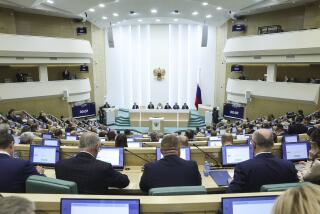U.S. Nuclear Testing
- Share via
There they go again. On Feb. 3, hopes for an agreement on a comprehensive test ban in the immediate future went up in smoke as the Reagan Administration conducted its first nuclear test of the new year and gave the Soviets a valid excuse for ending their 18-month-old moratorium on testing. Since the start of the Soviet moratorium, the United States has conducted more than 20 nuclear tests.
What did the American people gain from this test? It is difficult to tell exactly since information on the test is classified, but let’s speculate a little.
Maybe the test was on a new component of Reagan’s Strategic Defense Initiative--then the test would have been one more expensive step in a technological project that has been called “a step in the wrong direction” by a margin of 2 to 1 among physicists in this nation.
Maybe the test was on a new, exotic weapons system--but what do we need new weapons for if we have sufficient numbers of existing weapons to deter a Soviet first strike?
Maybe the test was to check the reliability of an existing weapon--but why don’t the Soviets feel a need to test the reliability of their nuclear weapons?
What did the American people lose? We lost a historic opportunity to sign what would have been the most important arms agreement to date. A comprehensive ban would prevent the United States and the Soviet Union from developing new nuclear weapons systems, thus allowing them to concentrate their efforts on ways of safely reducing the existing nuclear arsenals.
It is time for the Reagan Administration to realize that in the age of massive nuclear stockpiles, the United States can gain true security only by working with the Soviets, not against them, to ensure a safe and stable world.
ANN TERESE HALL
Pasadena
More to Read
Sign up for Essential California
The most important California stories and recommendations in your inbox every morning.
You may occasionally receive promotional content from the Los Angeles Times.










